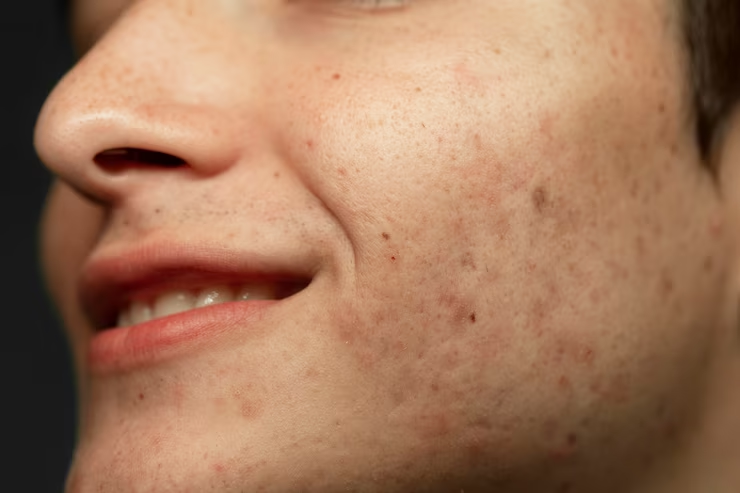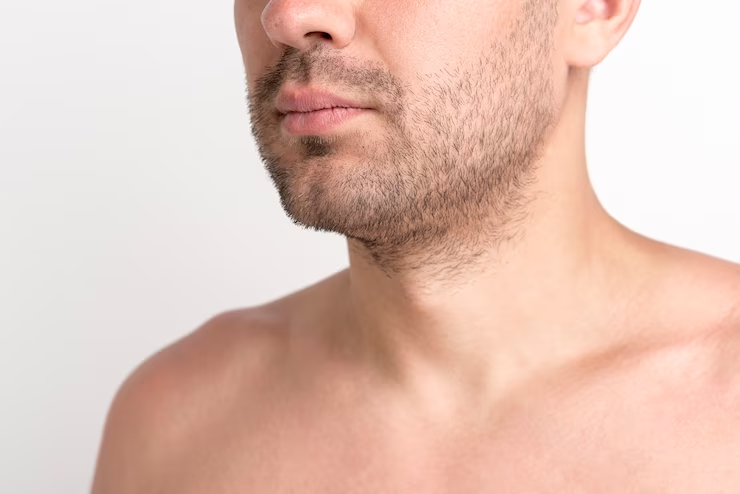
Are you tired of those pesky red pimples that appear at the most inconvenient times? We've all been there, dealing with the frustration and self-consciousness that comes with red, inflamed blemishes. But fear not! In this blog post, we will delve into the world of skincare and explore effective strategies on how to make a pimple less red.
Whether you have an important event or simply want to boost your confidence, understanding the causes of redness and discovering practical tips and remedies will empower you to tackle those red pimples head-on. Say goodbye to redness and hello to a clearer, more confident complexion. Let's dive in!
What Causes Pimple Redness?
Pimple redness can be an unwelcome addition to your complexion, drawing attention to blemishes and impacting your self-confidence. Understanding the causes behind pimple redness is crucial to effectively address the issue and discover how to make a pimple less red.
Inflammation is one of the primary factors contributing to pimple redness. When a pimple forms, it signifies an underlying inflammatory response within the skin. The immune system sends white blood cells to combat the bacteria, triggering an inflammatory cascade that results in redness, swelling, and tenderness around the affected area.
Precautions and General Skincare Tips to Reduce Pimple Redness
It's crucial to take precautions and establish a consistent skincare routine to achieve a clearer complexion and reduce pimple redness. By incorporating these measures into your daily habits, you can effectively address how to make a pimple less red and prevent further irritation. Prioritizing skincare precautions and maintaining a proper routine can work wonders in promoting a healthier, more balanced complexion.
Here are some valuable precautions and general skincare tips to help you in your journey:
Clean Hands and Avoid Touching
Ensure your hands are clean before touching your face to reduce the risk of introducing bacteria and further inflammation to the red pimple. Avoiding unnecessary touching can minimize the chances of aggravating the redness and promote faster healing.
Gentle Cleansing
Choose a gentle, non-abrasive cleanser specifically formulated for acne-prone skin to reduce pimple redness. Cleansing your face twice daily with such a cleanser helps remove dirt, excess oil, and impurities without causing further irritation or redness.
Suitable Skincare Products
Opt for skincare products labeled as non-comedogenic or oil-free to prevent clogging of pores and reduce pimple redness. Look for ingredients like salicylic acid or benzoyl peroxide, known for targeting acne-causing bacteria and reducing redness on pimples.
Moisturize Regularly
Use a lightweight, oil-free moisturizer for acne-prone skin to maintain proper hydration and prevent excessive dryness. By moisturizing regularly, you can keep your skin balanced, reducing the chances of redness and irritation on pimples.
Sun Protection
Shield your skin from the sun's harmful rays, which can worsen inflammation and redness of pimples. Apply a broad-spectrum sunscreen with an SPF of 30 or higher, wearing protective clothing and accessories to minimize exposure and reduce redness caused by sun damage.
Avoid Harsh Scrubs and Exfoliants
Steer clear of harsh scrubs or exfoliants that irritate and exacerbate pimple redness. Instead, opt for gentle exfoliating products or consider chemical exfoliation methods with ingredients like alpha hydroxy acids (AHAs) or beta hydroxy acids (BHAs) to effectively remove dead skin cells without increasing redness on pimples.
Following these precautions and integrating these general skin care tips into your daily routine can create a supportive environment for reducing pimple redness. Consistency is key, so remain patient and allow time for these practices to yield positive results.
Tips to Reduce Pimple Redness
When it comes to reducing pimple redness and achieving a more even complexion, you can incorporate several effective strategies into your skincare routine. By implementing these tips on how to make a pimple less red, you can take proactive steps toward minimizing redness and achieving a clearer skin tone. Let's explore some practical techniques:

Cold Compress
Applying a cold compress to the affected area can help constrict blood vessels and reduce pimple redness. Wrap a clean, soft cloth or ice pack in a thin towel and gently press it against the red pimple for a few minutes. The cold temperature soothes inflammation and temporarily diminishes the appearance of redness.
Green Tea Compress
Brew a cup of green tea and allow it to cool. Soak a clean cloth or cotton pad in the cooled tea and apply it to the red pimple for a few minutes. Green tea contains antioxidants and anti-inflammatory properties that help calm redness and promote healing.
Spot Treatments
Look for over-the-counter spot treatments or creams containing benzoyl peroxide or salicylic acid ingredients. These ingredients can target acne-causing bacteria, reduce inflammation, and gradually fade pimple redness. Apply the spot treatment to the red pimple according to the product instructions.
Calming Masks
Incorporate soothing face masks into your skincare routine. Look for masks with ingredients like aloe vera, chamomile, or cucumber, known for their calming and anti-inflammatory properties. Apply the mask to the entire face or as a spot treatment on the red pimple to reduce redness and promote skin healing.
Avoid Irritants
Be mindful of skincare products and cosmetics that irritate the skin and worsen pimple redness. Opt for gentle, fragrance-free formulas and avoid scrubbing or excessive rubbing of the pimple. Harsh ingredients or aggressive exfoliation can lead to further inflammation and redness.
Incorporating these tips into your skincare routine can effectively reduce pimple redness and promote a more balanced complexion. Remember, consistency and patience are key to achieving long-lasting results.
Long-term Strategies for Preventing Pimple Redness
Adopting long-term strategies in your skincare routine is crucial when addressing pimple redness. These strategies focus on preventing pimple formation and reducing the likelihood of redness, leading to a healthier complexion over time. Incorporating these practices will help you make a pimple less red and maintain clearer skin.
Let's explore some effective approaches:
Establish a Consistent Skincare Routine
Consistency is key in maintaining clear and less red skin. Develop a daily skincare routine that includes gentle cleansing, moisturizing, and applying appropriate acne-fighting products. Adhering to this routine can prevent breakouts and reduce pimple redness in the long run.
Choose Suitable Products
Opt for skincare products specifically formulated for your skin type, whether oily, dry, or combination. Look for non-comedogenic, oil-free, and dermatologist-recommended products that won't clog pores or exacerbate redness on pimples. Ingredients like niacinamide, tea tree oil, or soothing botanical extracts can be beneficial in reducing redness and inflammation.
Regular Exfoliation
Incorporate regular and gentle exfoliation into your skincare routine to remove dead skin cells, unclog pores, and prevent pimple formation. Use products with mild exfoliants like alpha hydroxy acids (AHAs) or beta hydroxy acids (BHAs) once or twice a week. Avoid harsh scrubs that can cause irritation and worsen redness.
Hydration and Diet
Keep your skin well-hydrated by drinking adequate water throughout the day. Proper hydration supports skin health and helps minimize the redness associated with dryness. Additionally, maintain a balanced diet rich in fruits, vegetables, and whole grains, while limiting processed foods and sugary snacks. A nutritious diet can contribute to overall skin health and reduce the likelihood of pimple-related redness.
Stress Management
Chronic stress can disrupt hormonal balance and trigger breakouts, leading to pimple redness. Incorporate stress-management techniques into your lifestyle, such as regular exercise, mindfulness practices, or engaging in activities you enjoy. By managing stress effectively, you can help prevent the occurrence of red pimples and reduce related redness.
Avoid Touching and Picking
Resist the urge to touch or pick at your pimples, as it can introduce bacteria, cause further inflammation, and prolong redness. Keep your hands away from your face and allow the pimples to heal naturally. Use spot treatments or other targeted solutions to address specific concerns if necessary.
By implementing these long-term strategies, you can establish a skincare routine that promotes healthier skin, prevents pimple formation, and minimizes pimple-related redness. Consistency and patience are key to achieving lasting results.
When To Seek Medical Help for Pimple Redness
Knowing when to visit a dermatologist is essential for addressing pimple redness and other skin concerns. While many cases of pimple redness can be managed with proper skincare and home remedies, there are situations where a dermatologist's expertise is beneficial. Here are some signs that it may be time to schedule an appointment with a dermatologist:
Severe or Persistent Redness
If you have tried various home remedies and over-the-counter treatments, but the pimple redness persists or worsens over time, you should seek professional help. A dermatologist can evaluate the severity of the condition, identify underlying causes, and provide targeted treatment options.
Cystic Acne or Nodules
Cystic acne refers to large, painful, deep-rooted pimples that are more challenging to treat. Suppose you have persistent cystic acne or nodules causing significant redness and discomfort. In that case, a dermatologist can offer specialized treatments, such as prescription medications or in-office procedures, to address these severe forms of acne.
Scarring or Hyperpigmentation
If pimple redness has resulted in scarring or post-inflammatory hyperpigmentation, where the skin appears darker or discolored after the pimple has healed, a dermatologist can recommend appropriate treatment options. They may suggest procedures like laser therapy, chemical peels, or microneedling to improve the appearance of the affected areas.
Frequent Breakouts or Acne that Impacts Daily Life
It is worth consulting a dermatologist if you experience frequent or recurrent breakouts that significantly affect your self-esteem, confidence, or daily life activities. They can assess your skin condition, identify potential triggers or underlying factors, and develop a personalized treatment plan to effectively manage your acne and reduce pimple redness.
Unknown Skin Condition
If you are unsure about the nature of your skin condition or suspect it may be more than regular acne, it is best to consult a dermatologist for an accurate diagnosis. They can differentiate between skin conditions, such as rosacea, eczema, or allergic reactions, and provide appropriate treatment recommendations tailored to your needs.
Remember, a dermatologist is a medical professional with expertise in skin health. They can provide valuable insights, prescribe medications or treatments unavailable over the counter, and guide you on the best action to address your pimple redness and overall skin concerns.
To wrap it up…
Reducing pimple redness is a common concern for many seeking clearer, more even-toned skin. Implementing the strategies and tips outlined in this blog post, you can effectively address pimple-related redness and promote a healthier complexion. Remember, patience and consistency are key to achieving long-lasting results.









